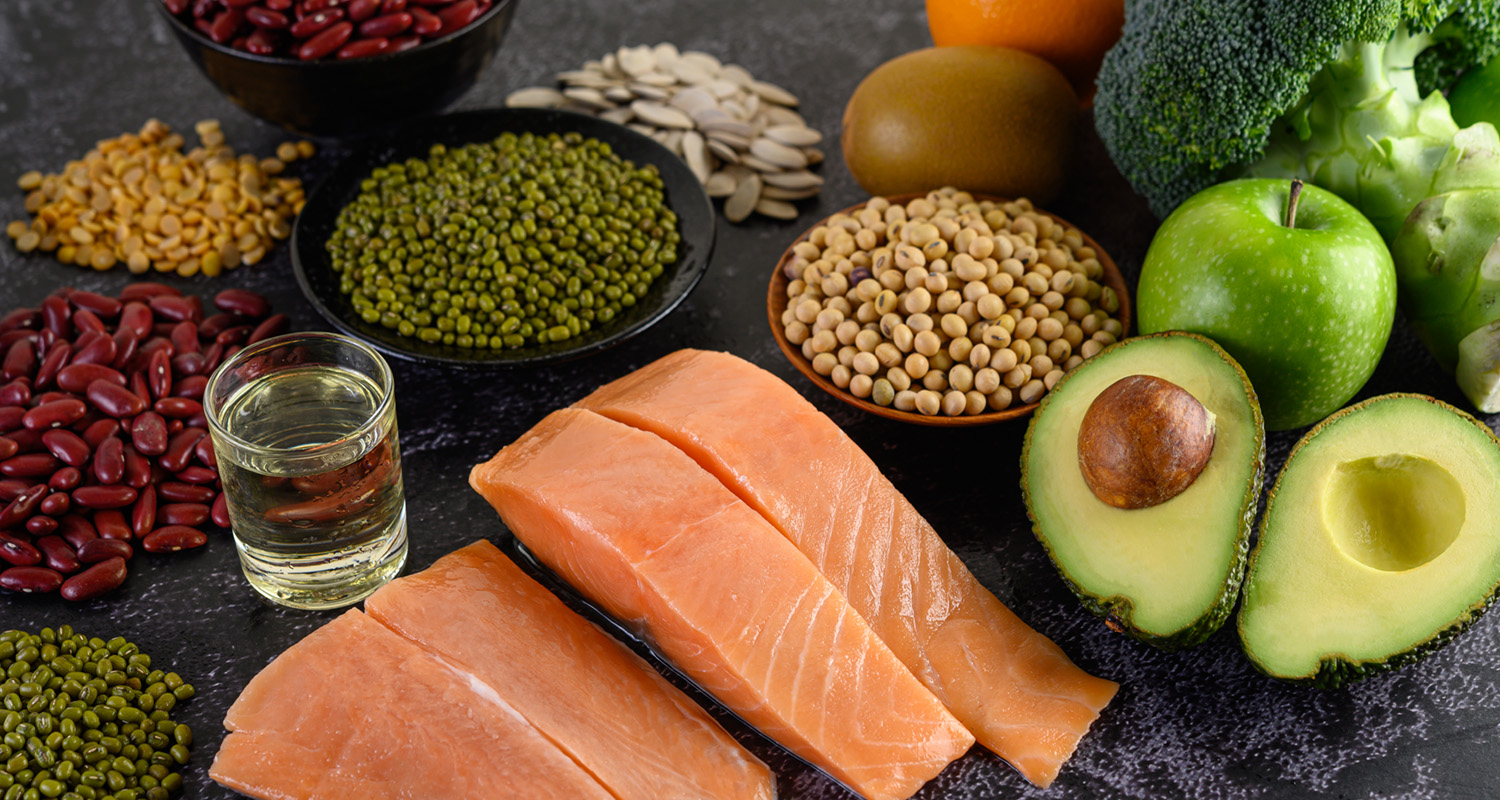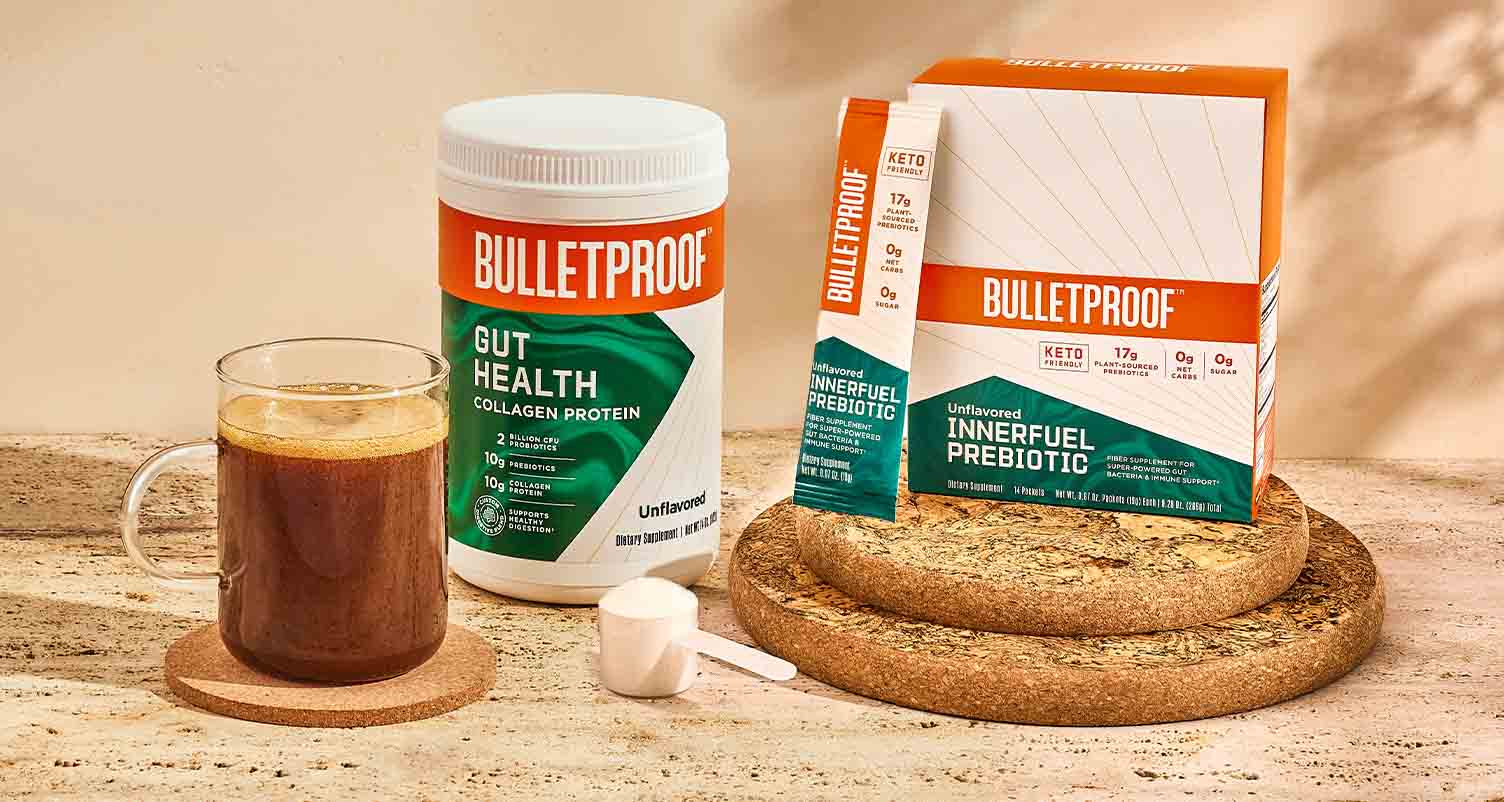- Magnesium is a mineral the body needs to be healthy.
- Magnesium has many health benefits, including lowering blood pressure and supporting sleep quality. It can also help prevent constipation and regulate blood sugar.
-
You can get magnesium from many foods and supplements.
[tldr]
Magnesium is the MVP of minerals. Since it’s found in every single cell in your body, it’s safe to say you can’t live without it. This mighty mineral has many, many health benefits, such as regulating blood sugar, supporting your mood and serving as a sleep aid.[ref URL="https://www.hsph.harvard.edu/nutritionsource/magnesium/"]
You can include many magnesium-rich foods, such as leafy green vegetables, nuts, seeds and whole grains. Although magnesium is available in foods and is a trendy supplement, many people still don’t get enough. Keep reading to learn about magnesium benefits and how to add this essential mineral to your diet.

What Is Magnesium?
Magnesium gives your brain and body a helping hand. That’s why it’s called a helper molecule, a cofactor. In this role, it assists in more than 300 enzyme systems in the body.[ref URL="https://ods.od.nih.gov/factsheets/Magnesium-HealthProfessional/"]
Some of the biochemical reactions it’s involved in include:
- Energy production
- Regulating nerve and muscle function
- Building proteins
- Supporting the immune system
- Blood glucose control
- Blood pressure regulation
- Gene maintenance
Magnesium is present in many foods and is available in supplements. Yet, most people do not meet the recommended daily allowance (RDA).
The recommended daily allowance is as follows:
- 400-420 milligrams for men
- 310-320 milligrams for women
However, research has found that more than half of Americans don’t get the recommended daily amount of magnesium.[ref URL=" https://www.ncbi.nlm.nih.gov/pmc/articles/PMC6163803/ "]

Magnesium Benefits
Magnesium benefits the body in myriad ways. For example, it:
Helps regulate blood sugar
One of magnesium’s many jobs is to regulate blood sugar. In turn, this helps improve insulin resistance.[ref URL="https://www.ncbi.nlm.nih.gov/pmc/articles/PMC6356710/ "] Insulin resistance is detrimental to your health because it can lead to excessive sugar in the blood.
Elevated blood glucose levels over long periods can result in pre-diabetes and type 2 diabetes.[ref URL="https://www.ncbi.nlm.nih.gov/pmc/articles/PMC7478262/"]
According to research, people with type 2 diabetes have lower levels of magnesium in their blood. A meta-analysis of 25 studies found that magnesium supplements may reduce fasting blood sugar levels. They can also improve insulin sensitivity in those with diabetes.[ref URL="https://www.ncbi.nlm.nih.gov/pmc/articles/PMC8619199/"]
May combat depression
Consider magnesium for keeping the blues away. If you’re not getting enough magnesium, this can lead to an increased risk of depression.
Magnesium may help combat both anxiety and depression[ref URL="https://health.clevelandclinic.org/magnesium-for-anxiety "] It does this by regulating the nervous system and supporting brain function. In a 2017 study, 112 participants with depression took 248 milligrams of magnesium chloride daily. They did this for six weeks. At the end of the study, the group who took magnesium supplements experienced significant improvements in their mood. This was versus the placebo group.[ref URL="https://www.ncbi.nlm.nih.gov/pmc/articles/PMC5487054/"]
Magnesium decreases the neurotransmitters that make you feel anxious. It also stimulates the feel-good neurotransmitters instead. Gamma-aminobutyric acid (GABA) is one of them.[ref URL="https://www.ncbi.nlm.nih.gov/books/NBK507254"] It’s known for helping you zen out. Since magnesium plays a role in muscle and nerve function, it may also help with muscle tension. This is a common symptom of anxiety.
May improve sleep quality
If you’re going to improve your sleep, melatonin isn’t the only supplement that can help. Magnesium has been found to help you fall asleep and promote sleep quality.
Magnesium has also been found to help treat sleep disorders, such as restless leg syndrome.[ref URL="https://bmccomplementmedtherapies.biomedcentral.com/articles/10.1186/s12906-022-03814-8 "] As its name suggests, this condition creates a strong urge to move your legs when lying down. Magnesium may help these muscles and nerves relax.[ref URL="https://pubmed.ncbi.nlm.nih.gov/31678660/"]
Wondering which magnesium is best for sleep and anxiety? Research suggests that magnesium glycinate and magnesium L-threonate help the most. If you’re taking magnesium for sleep, taking it 30 minutes before bedtime is recommended.

Best Ways to Consume Magnesium
The best way to consume magnesium is through food, and there’s no shortage of options.
Try these foods to get your magnesium fix:[ref URL="https://health.clevelandclinic.org/foods-that-are-high-in-magnesium "][ref URL="https://doh.wa.gov/community-and-environment/food/fish/health-benefits"]
Green leafy vegetables: spinach, kale, Swiss chard, collard greens
Legumes: lentils, beans, chickpeas, black-eyed peas
Nuts: almonds, cashews, Brazil nuts, walnuts
Seeds: pumpkin seeds, flaxseed, chia seeds
Whole grains: wheat, oats, quinoa, barley
Seafood: salmon, mackerel, halibut, squid
Soy products: soybeans, soymilk, tofu, tempeh
Dairy: low-fat yogurt, low-fat milk
Supplements are an option if you’re not getting enough magnesium through nutrient-dense foods. We offer several magnesium supplements. They include:
Magnesium: Live your most healthful life with our magnesium supplement. Each capsule contains 320 milligrams of magnesium citrate. This is one of the most absorbable forms of magnesium. Health benefits include support for your muscles and bones, nervous system and stress.
Dark Chocolate Energy Collagen Protein: Magnesium and collagen team up in this collagen powder. It also comes in vanilla bean. The blend features a mix of ginseng, cordyceps mushroom, magnesium and MCT oil. Together, they deliver energy without caffeine. (Learn more about natural energy supplements that add pep to your step.)
When is the best time to take magnesium? You can take magnesium at any time of day, preferably with a meal. The timing matters less than whether you take it consistently. Getting into a habit does the body wonders.
Magnesium is an essential mineral that helps with more than 300 processes in the body. Its benefits include supporting anxiety and depression, better-quality sleep, and blood sugar regulation.
Eating a variety of nutrient-dense items gets you one step closer to feeling your best. It also helps prevent magnesium deficiency. Magnesium supplements are also helpful. Consult your doctor before trying any new supplements.









